English
Greetings to the Hive Diy community, I hope that these days you are full of good spirits, quite inspired and have a very productive week.

Image's Source - Image Source
I have been quite entertained, busy, doing quite urgent repairs in my house, and that is the reason for this publication. My house was built in the fifties of the twentieth century, it is more than seventy years old and as you might expect, today the house continually requires improvements and repairs. The phrase has never been better said: “a house is never ready.”
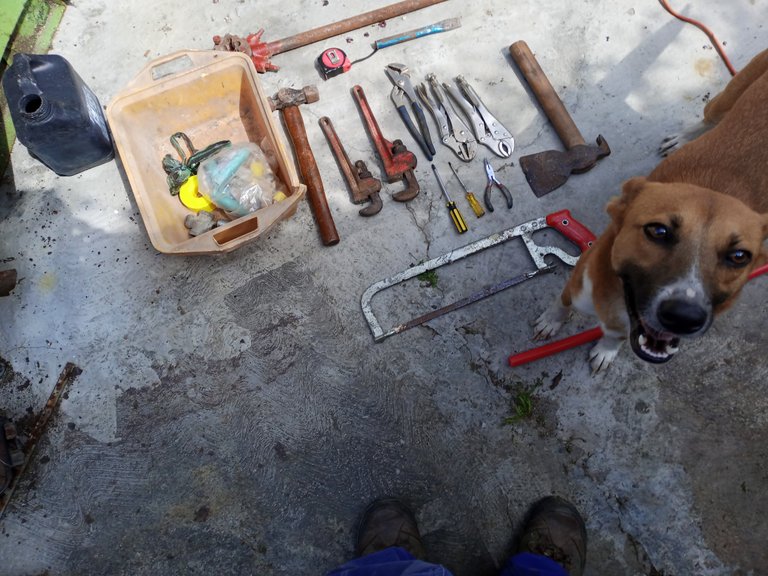
This week, the house's water inlet pipe finally gave way to corrosion and when the water supply arrived (every four or six weeks, there is piped water service), a stream of water appeared, like a fountain. of a square, I had to dedicate myself to changing that section of pipes.
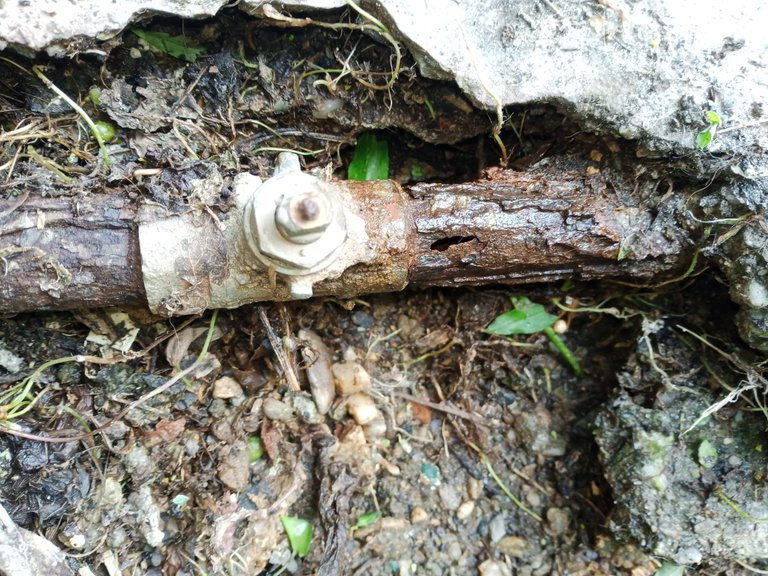
The galvanized steel pipe was embedded on one side, in the parking lot sidewalk, only the place where the stopcock was placed was visible. It's easy to see the damage of this section.
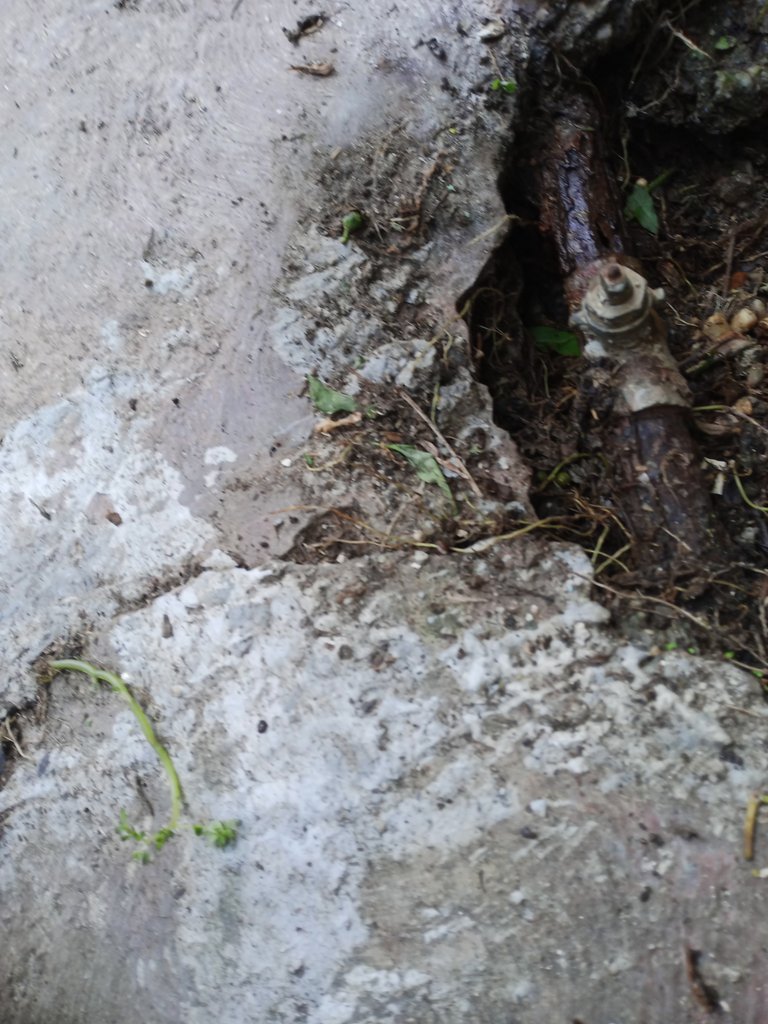
At this moment I don't have a concrete cutting disc for the angle sander (the grinder), to make the cut in the sidewalk and remove the pipe, so I will have to do it another way.
Using a piece of pipe as a ruler, I trace the line to guide the cut on the cement.

With the drill and a concrete bit I make holes every two or three centimeters.
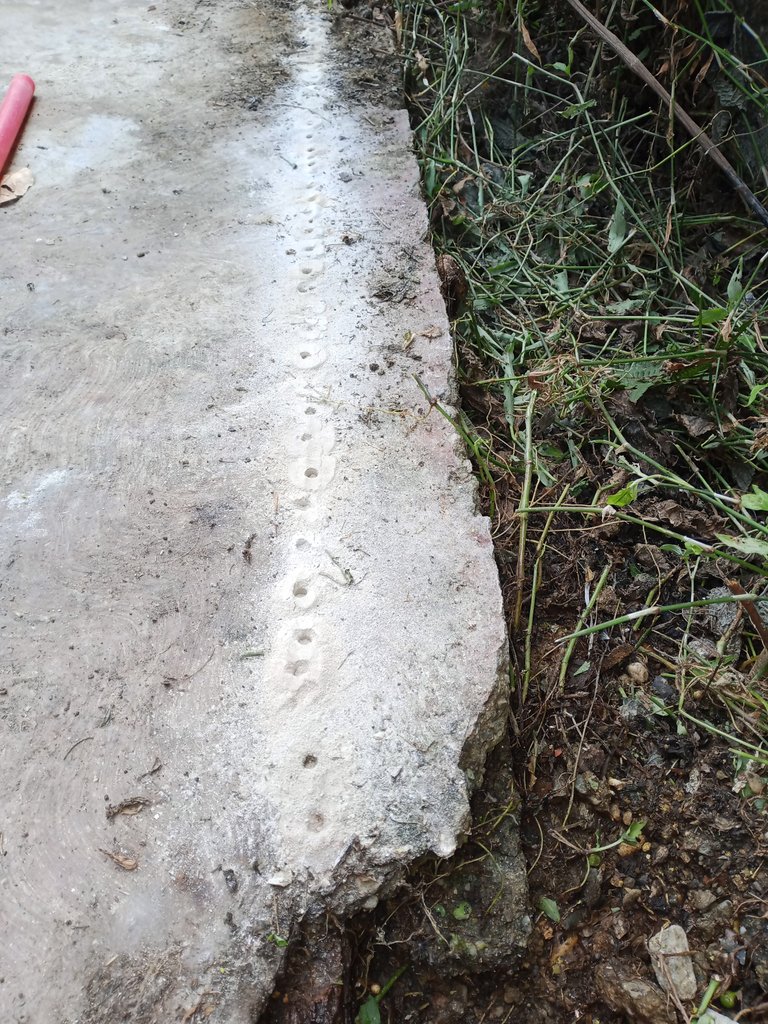
The fun part begins, I have to break it with the chisel and the hammer. The line of holes helps the cutting follow the line and become easier.
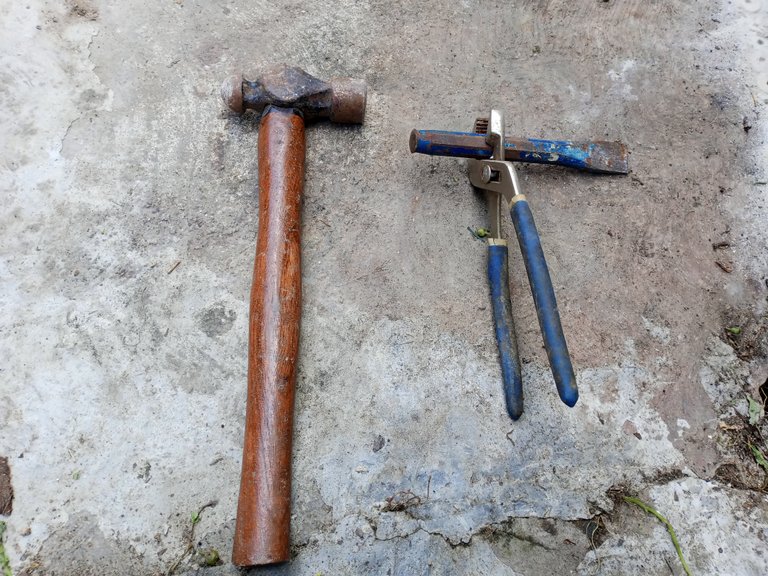
You don't have to break it on the first hit, you follow the line and on the third pass the piece of cement has separated.
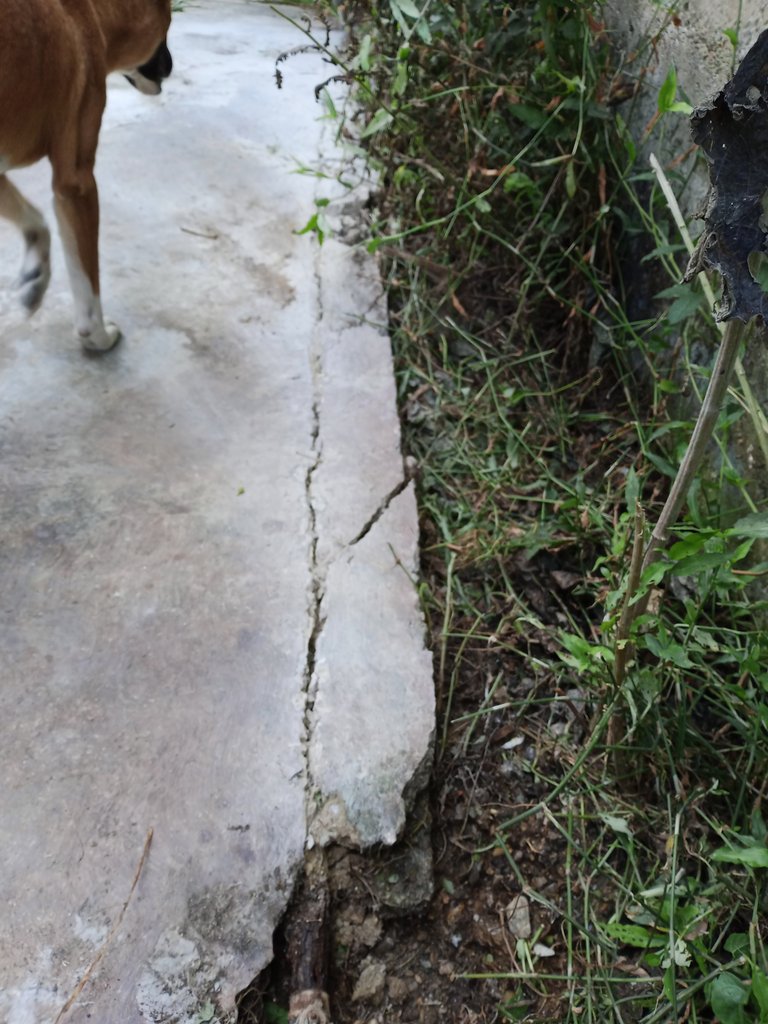
It is clear that the chisel is not held by hand, when doing this work it is easy to miss the blow at some point and the situation is not very pleasant. So you use locking pliers or pliers long enough to hold the chisel securely, well away from the hammer.
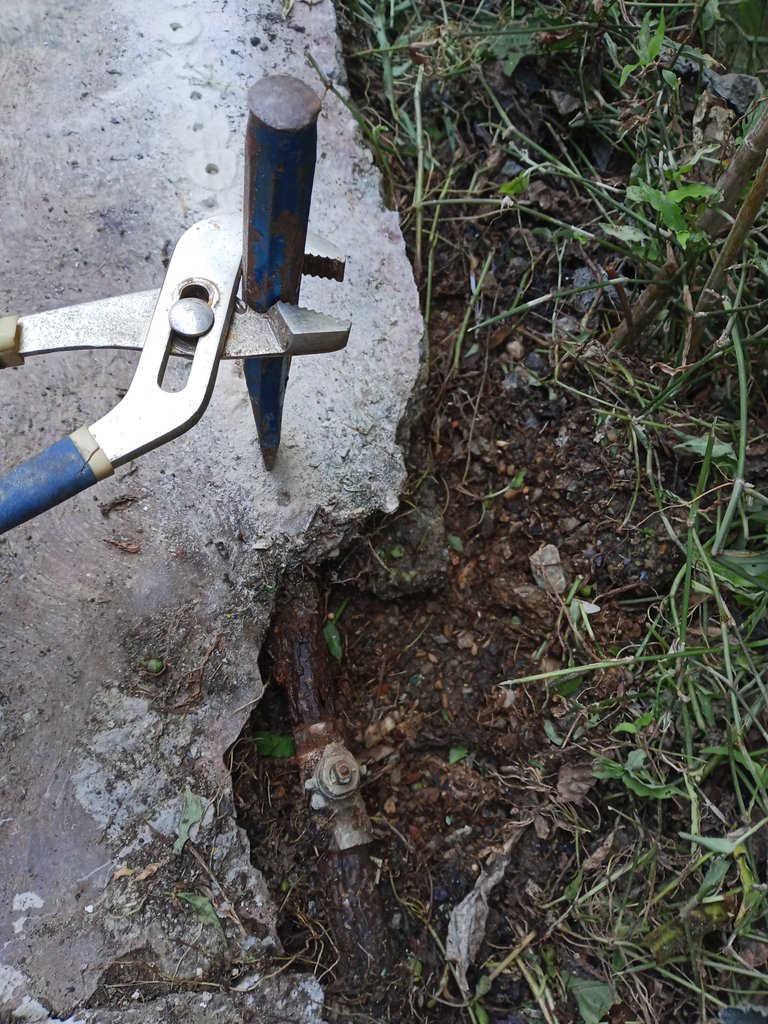
This working method has quite a history, references are made to that cutting method from the time of the Egyptians and other ancient peoples, when they cut stones to make obelisks.
That's what I meant when I said it's "the old method."
All joints and connections were damaged or about to break.


Also, I discovered the upstream pipe trying to find the area in the best condition, I need to place a union, I plan in the future to get more pipe and continue working, changing the water inlet line.
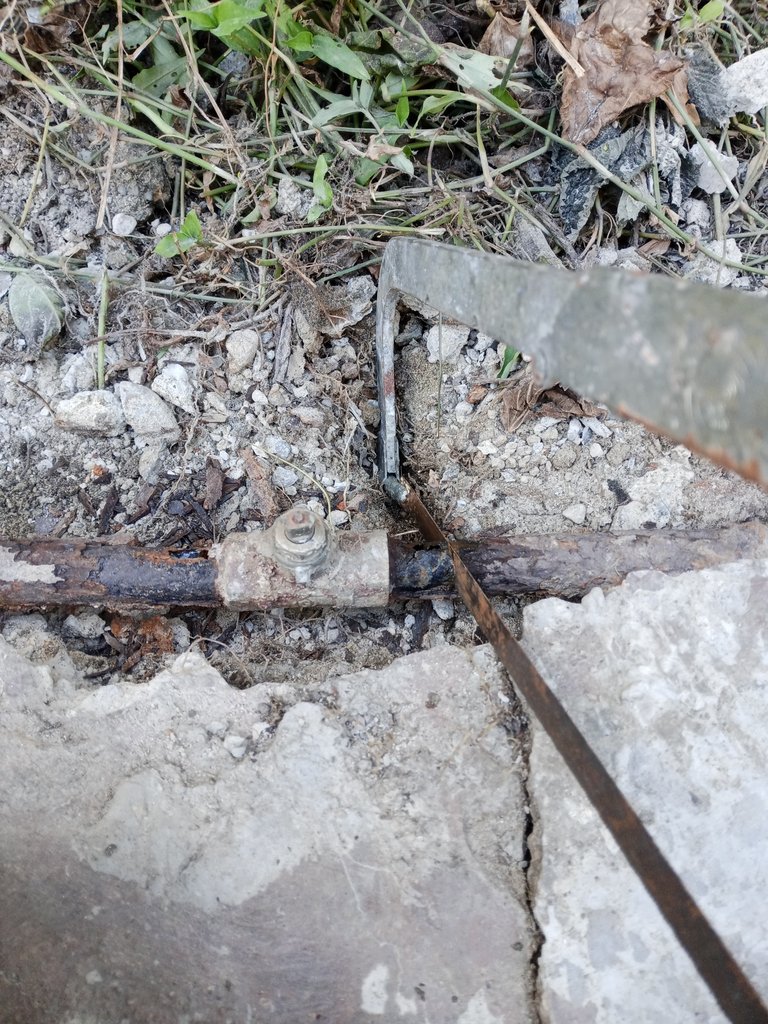
I can't thread the tube and I can't fit a dresser joint, due to the wear caused by corrosion, so I apply an old trick of attaching a union with a short nipple and a piece of ¾” hose to the ½” tube.
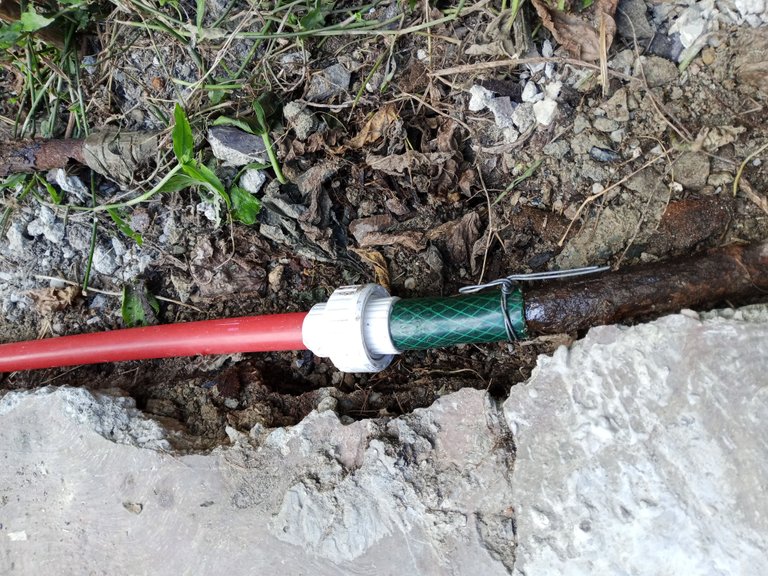
It is a street connection, which is useful for the moment, because the water that comes through the pipe does not have much pressure.
The section I replaced is not very long, but it took days of work.
Something that cannot be done when making these types of repairs is recycling pipes. Everything must be replaced with new tubes and connections.
Finally, secure the patio water inlet by nailing a piece of profile to secure the pipe in the correct position.

As a funny fact, when I was going to install the water valve, the water supply began to arrive through the pipes, (Murphy's law) I could not miss the opportunity to gather more water, I put everything together as quickly as I could, so I'll make that connection later.
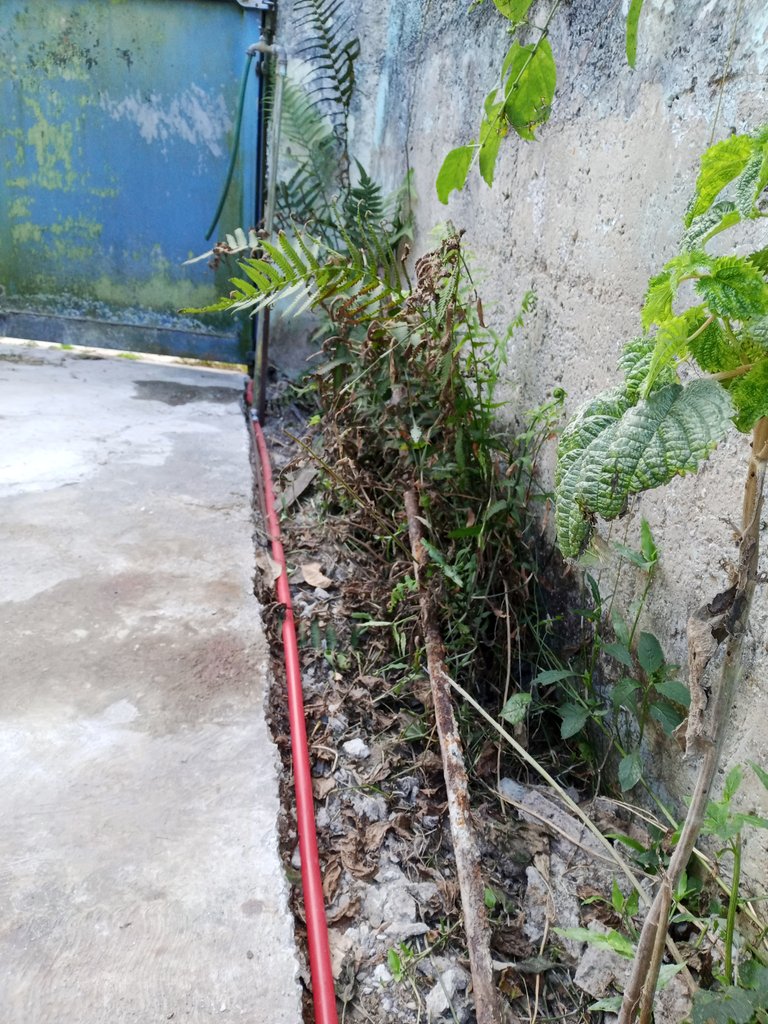
Eventually, I have to change more sections of the pipe. But I'll go easy. We have to break up the patio floor even more, and gather more tubes and connections.

I hope to recover in a couple of days after abusing my arm all the time, to publish what I had planned to share in the community before the pipe accident.
Thank you very much for stopping by and reading me.
Have an excellent week.
Peace.
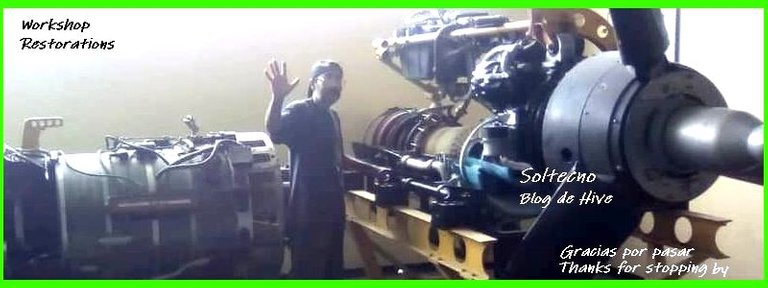
Images unless noted are screenshots of my work.
Use Google Translate for the English language.
Español
Saludo a la comunidad de Hive Diy, espero que en estos días estén llenos de buen ánimo, bastante inspirados y tengan una semana bastante productiva.

Image's Source - Fuente de la Imagen
Yo he estado bastante entretenido, atareado, haciendo reparaciones bastante urgentes en mi casa, y es el motivo de esta publicación. Mi casa fue construida por los años cincuenta del siglo veinte, tiene más de setenta años y como es de suponer, hoy día la casa requiere mejoras y reparaciones continuamente. Nunca mejor dicha la frase: “una casa nunca termina de estar lista”.

En esta semana, la tubería de entrada del agua de la casa finalmente cedió a la corrosión y cuando llego el suministro de agua (cada cuatro o seis semanas, hay servicio de agua por tuberías), se asomó un chorro de agua, como una fuente de una plaza, tuve que dedicarme a cambiar ese tramo de tuberías.

La tubería de acero galvanizado estaba empotrada a un lado, en la acera del estacionamiento, quedaba a la vista solo el lugar donde estaba colocada la llave de paso. Es fácil ver el daño de esta sección.

No tengo en este momento un disco de cortar concreto para la lijadora angular (el esmeril), para hacer el corte en la acera y sacar el tubo, así que tendré que hacerlo de otro modo.
Usando un trozo de tubo como regla, trazo la línea para hacer la guía del corte sobre el cemento.

Con el taladro y una broca para concreto hago perforaciones cada dos o tres centímetros.

Comienza la parte entretenida, tengo que ir rompiendo con el cincel y el martillo. La línea de agujeros ayuda a que el corte siga la línea y se haga más fácil.

No hay que romper al primer golpe, se va siguiendo la línea y ya al tercer recorrido el trozo de cemento se ha separado.

Es claro que no se sostiene el cincel con la mano, cuando se hace este trabajo es fácil fallar en algún momento el golpe y no es muy agradable la situación. Así que se usa un alicate de presión o un alicate lo suficientemente largo para sostener el cincel con seguridad, bien lejos del martillo.

Este método de trabajo, tiene bastante historia, se hace referencias a ese método de corte de la época de los egipcios y otros pueblos de la antigüedad, cuando cortaban las piedras para hacer obeliscos.
A eso me refería cuando decía que es "el método viejo".
Todas las uniones y conexiones estaban dañadas o a punto de romperse.


También, descubrí la tubería aguas arriba tratando de encontrar la zona en mejor estado, necesito colocar una unión, planeo a futuro conseguir más tubería y seguir trabajando, cambiando la línea de entrada de agua.

No puedo hacer rosca al tubo y tampoco colocar una junta dresser, por el desgaste causado por la corrosión, así que aplico un viejo truco de colocar una unión con un niple corto y un trozo de manguera de ¾” al tubo de ½”.

Es una conexión callejera, que de momento sirve, porque el agua que llega por la tubería no tiene mucha presión.
El tramo que reemplace, no es muy largo, pero se llevó días de trabajo.
Algo que no puede hacerse cuando se hacen este tipo de reparaciones es reciclar tuberías. Se deben cambiar todo por tubos y conexiones nuevas.
Finalmente, fije la toma de agua del patio clavando un trozo de perfil para asegurar el tubo en la posición correcta.

Como dato gracioso, cuando iba a colocar la llave de paso para el agua, empezó a llegar el suministro de agua por las tuberías, (ley de Murphy) no podía perder la oportunidad de reunir más agua, arme todo lo más rápido que pude, por lo que haré esa conexión luego.

Eventualmente, tengo que ir cambiando más tramos de la tubería. Pero iré con calma. Hay que romper aún más el piso del patio, y reunir más tubos y conexiones.

Espero en un par de días recuperarme después de abusar todo el rato de mi brazo, para publicar lo que tenía planeado compartir en la comunidad antes del accidente del tubo.
Muchas gracias por pasar y leerme.
Que tengan una excelente semana.
Paz.

Las imágenes a menos que se indique son capturas de mi trabajo.
Use el traductor de Google para el idioma inglés.



